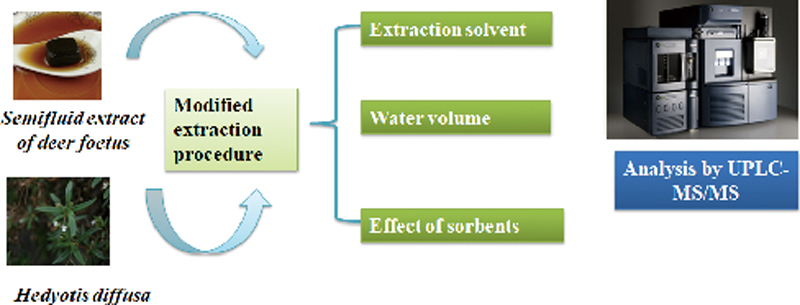Abstract
A reliable and cost-effective method for the determination of multiple neonicotinoids was developed using a modified QuEChERS-based extraction procedure in complex matrices, namely Hedyotis diffusa (a representative of the Traditional Chinese herb which contains lots of pigment, saponin and terpene) and Semifluid extract of deer foetus (a representative of the Chinese traditional patent medicine that was produced with several different herbs, and especially containing lots of protein, except for other interference components). Ultra-performance liquid chromatography tandem mass spectrometry (UPLC-MS/MS) was used for the quantification and confirmation of five compounds. Except for two transitions obtained by the MRM mode, identification was further carried out by the ion radios. The proposed chemical structure of every selected product ion and the proposed pyrolysis way were presented. The extraction, clean-up, UPLC separation and MS/MS parameters were especially optimized in order to obtain better recoveries. The low limits of detection (LODs) of five insecticides ranged from 0.04 to 0.81 μg kg−1. Matrix matched calibration in the concentration range of 0.05 – 50 μg kg−1 were used to compensate the matrix effect, and reasonable recoveries 80.2 – 105.4% of five compounds were demonstrated in different spiked levels with inter-RSD from 1.7 to 10.6%. The proposed method is an alternative approach to make an analysis of neonicotinoids in Chinese medicine, which is more reliable and promising compared with other detection methods.



